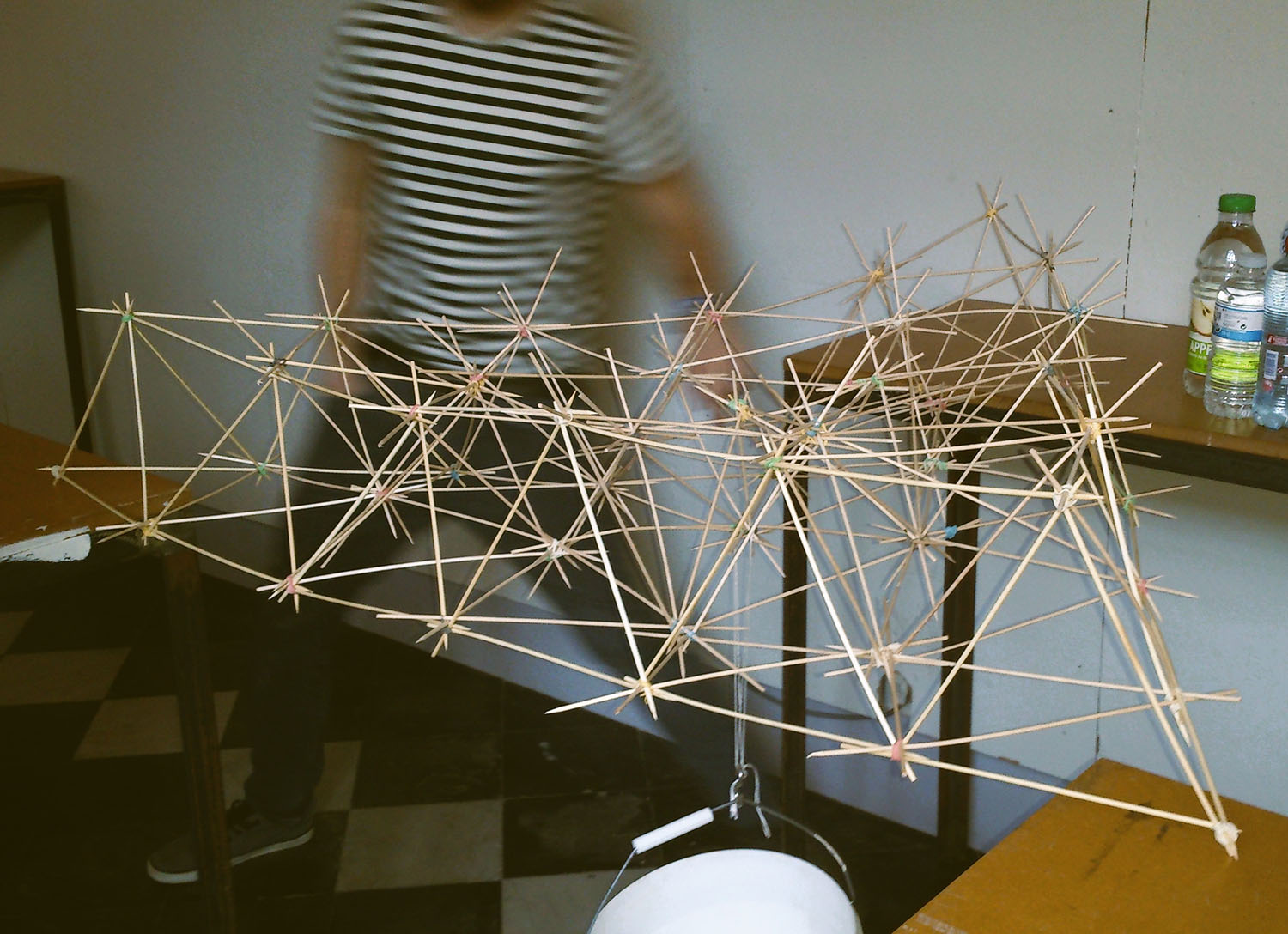Making models for structural understanding
Individual masterproef 2022-23
Laurens Luyten (supervisor) + Öykü Acican (co-supervisor)
Campus Ghent
EN/NL
Individual, max number of students: 1+1
Description of the project:
In structural education, physical and digital models are often used to let students experience structural behaviour. This experience is then used to develop structural understanding, often by connecting theory with the experienced behaviour. The pedagogical application of models can have different forms: from calculating certain structural behaviour and testing its results with a model, to creating a model through trial and error to unlock conceptual understanding.
In this dissertation project, two topics are available, each for one student. The first topic focusses on the physical models, and the second on the digital models. In each master dissertation, the student maps existing pedagogical applications of physical/digital models for structural understanding, with a focus on architecture programmes. These applications are analysed and organized according to their characteristics (e.g. prior knowledge of the student, course and programme, exercise setup, learning goals and environment, learning results, and students’ appreciation). The student develops this framework of analysis and further investigates novel possibilities in applying physical/digital models for structural understanding in architecture projects (of for example the horizontal stability).
Tutoring in semester 1: five meetings with lectures, introduction and start-up of the dissertation project.
Tutoring in semester 2: up to weekly tutoring (according to the needs) and three reviews.
Expected output:
A manuscript presenting (1) the developed taxonomy of existing pedagogical applications of physical/digital models in structure education, together with (2) the design of the additional application for structural understanding, developed by the student.
References/Further reading:
Fernández-Sánchez, G. and Millán, M.Á., 2013. Structural Analysis Education: Learning by Hands-On Projects and Calculating Structures. Journal of Professional Issues in Engineering Education and Practice, 139 (3), 244–247.
Jannasch, E., 2017. Fit Forms and Free Forms of the Masonry Dome. Nexus Network Journal, 19 (3), 599–617.
Lindemann, J., Sandberg, G., and Olsson, K., 2004. An approach to teaching architectural and engineering students utilizing computational mechanics software ForcePAD. Journal of Information Technology in Construction (ITcon), 9 (15), 219–228.
Luyten, L., Vilquin, T., Vrouwe, I., and Verstrynge, E., 2016. A comparative study of the physical model as a tool for structural education. In: P. Cruz, ed. Structures and Architecture, Beyond their Limits. Presented at the 3rd International Conference on Structures and Architecture, Guimarães, 27-29 July 2016, London: Taylor & Francis, 806–813.
Saïdani, M., 2014. Use of Physical and Numerical Models in Engineering Design Education. Presented at the Proceedings of the 2014 International Conference on Industrial Engineering and Operations Management, 61–65.
Schmucker, D.G., 1998. Models, Models, Models: The Use Of Physical Models To Enhance The Structural Engineering Experience. Presented at the ASEE PEER 1998 Annual Conference, 3.413.1-3.413.9.
Image copyright Laurens Luyten.

